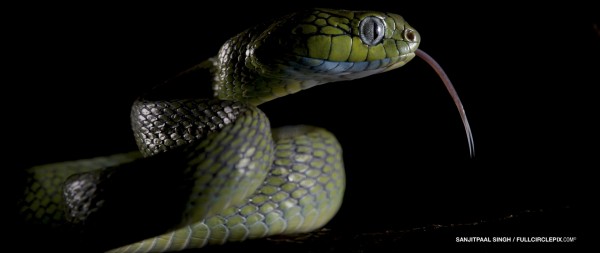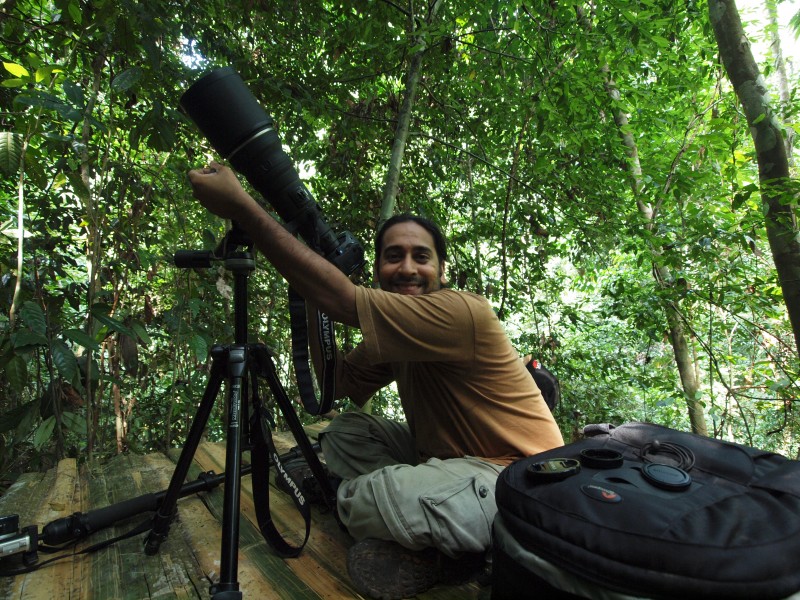
Into the wild! Sanjitpaal Singh
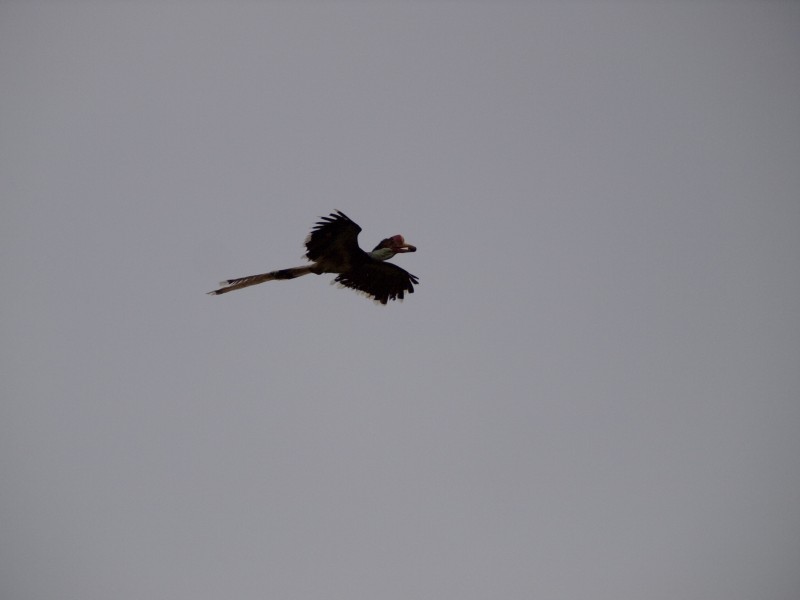
Helmeted Hornbill (Female)

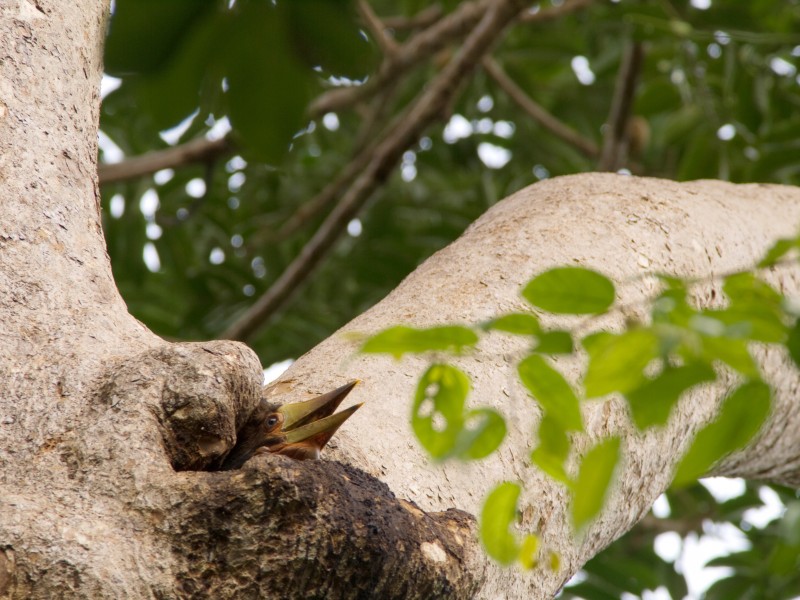
Helmeted Chick
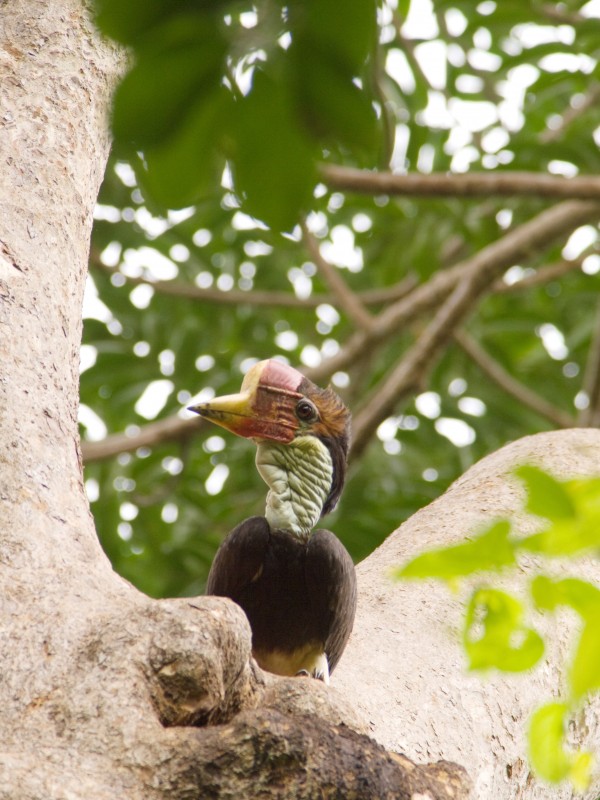
Helmeted Hornbill Female at nest cavity
Helmeted Hornbills
Ugly to some, beautiful to others, the Helmeted Hornbill can measure up to 120 cm from bill to tip of its tail. Its neck and head are featherless and it possesses a rather awkward solid and broad casque. In the wild, these hornbills have been observed to use their casque to crash into each other, head to head in midair. The manner in which most hornbills choose their life partner is rather romantic. Generally males offer fruit to a female as if it was a proposal and once she has selected her mate, she only accepts fruit from him. Once this “marriage” ceremony has taken place, the pair remains together monogamously for the rest of their lives. Hornbills tend to breed every year and they lay up to two eggs, though usually only one offspring survives to adulthood. The Helmeted Hornbills are choosier than most when it comes to the selection of nest cavities. Unlike other hornbills, they prefer a knob/stump like cavity, one they can perch on, without the need to hook onto. Most other hornbills such as the Rhinoceros Hornbill hook onto a nest cavity during feeds. After mating, most female move into the nest cavity and the male and female participate in nest sealing of the entrance, using mud, fruit and faeces as sealing material. They will then seal the rim and leave a gap in the nest cavity big enough to allow the male to feed the female. Now imprisoned, the female lays her eggs and is entirely dependent on her mate to find and provide food. Helmeted and Red-knobbed Hornbills have the longest nesting period, spanning as long as five to six months. The female may even shed its flight feathers, to line the nest cavity.
In the beginning, the devoted male will move back and forth the nest site perhaps twice a day to feed the female. Once the chick has hatched, these trips increase to up to five times a day. The growing chick requires protein and so besides figs, the most common food source of the Helmeted Hornbills, the male hunts for insects, snakes, nestlings or rodents. As the male flies into the nest area, its wings flap loudly, announcing its presence to the chick. The chick begins to call, coarsely, and the male flies to perch on the rim of the nest cavity. Once satisfied that it is not being watched, one by one, the male regurgitates fruits it had collected and feeds it to the eager chick. Each fruit received by the chick is greeted by an enthusiastic scream. The female calls out softly, as the male continues feeding. The male pauses in between feeding to view its surroundings, always cautious not to reveal its nest cavity and its vulnerable inmates to other animals or human beings. Once the feeding is over, the male carefully picks faecal matter that has collected at the nest rim and flings them off. The female and chick adhere strictly to maintaining nest sanitation, by shooting out their faeces through the narrow opening of the nest cavity. When the male flies away, the chick may still be heard calling, demanding for more. The male flies away from the nest area in search of more food and usually returns within several hours. At times, after feeding, the male perches on the nest tree and begin calling loudly. The calls of the Helmeted Hornbills are rather odd. It begins with a single note call, slow in the beginning and then becoming more rapid, “tuk… tuk… tuk, tuk, tuk” then it ends its call with a sort of maniac laughter, echoing throughout the rainforest. Usually by the fifth month, the nest becomes more cramped, and so the female breaks the nest sealing and leaves the nest cavity. For now the female is too weak to feed the chick and leaves that job to the male until she regains her strength. In order to persuade his mate and chick to leave the next, the male gently tempts them with fruits. It holds fruit in its bill and perches on the nest cavity but does not share it, flying away instead as it calls softly. Hunger eventually drives the inmates from the nest. At the very end of the nesting period, anytime between the fifth or sixth month, the well formed chick will squeeze its way out of the nest cavity, and take flight for the very first time through the forest.
Threats to Hornbills
Helmeted Hornbills are hunted for their “golden jade” as the keratinous layers that make up their casque is called. The golden jade is carved into small ornaments such as brooches and buckles. In Borneo, the casque is used traditionally as earring and worn by those that have taken a human head. However, the main threat faced by hornbills is deforestation. Unsustainably logging affects the survival of the hornbills as these birds require large mature trees to nest in and vast foraging areas.






